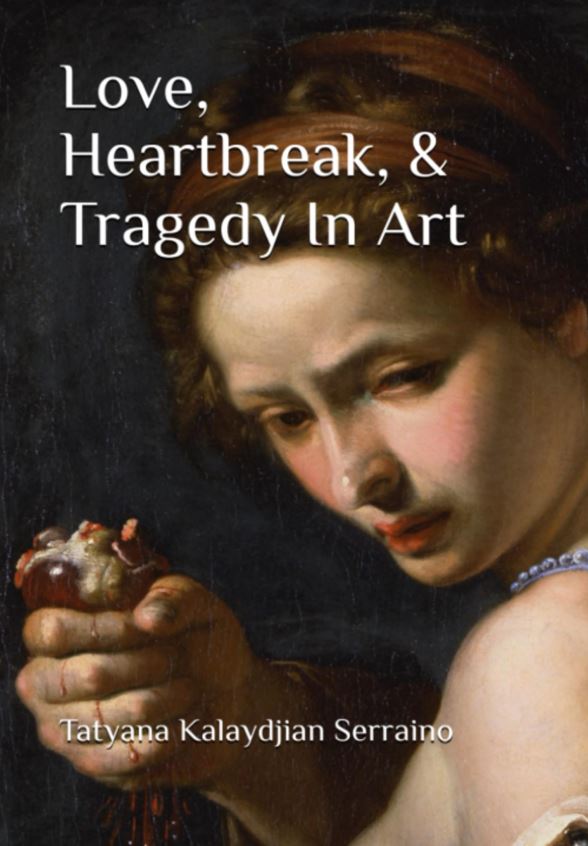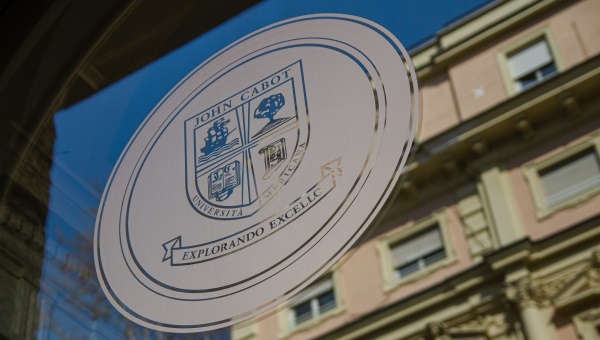Alumna Tatyana Kalaydjian Serraino Explores Loss and Sorrow in her Book, Love, Heartbreak, & Tragedy in Art
Alumna Tatyana Kalaydjian Serraino (Class of 2019) – art historian, art consultant, content creator, and presenter – has recently published her first book Love, Heartbreak, & Tragedy in Art (2024). Based in London, Tatyana is the founder of About Art by Tatyana, a social media channel with close to half a million followers that makes art history accessible through YouTube documentaries, TikTok videos, and her online blog. As she explains in the book, Tatyana’s inspiration came from artworks that showcase “the raw, unfiltered emotions that accompany lost love and sorrow.”

“As an art historian, I have always been deeply moved by works of art that do more than simply showcase grandeur and beauty,” said Tatyana. “The pieces that linger most vividly in my memory are those that evoke a visceral reaction, a lump in my throat, a tear in my eye, a quiet moment of introspection.” This led her to compile a selection of artworks centered around themes of lost love and heartbreak into a single book, where she explores the emotional resonance that art can evoke.
The Paintings Featured in the Book

The book features 20 paintings ranging from the 17th to the late 19th century, from Bernardino Mei’s Ghismunda (c. 1650) to Edvard Munch’s Vampire (1895). Each painting is accompanied by a short text that delves into the historical, cultural, and personal influences behind them.
For instance, the first artwork featured, Ghismunda, painted by Bernardino Mei, shows the character of Ghismunda – from Italian writer Boccaccio’s best-known work, The Decameron (1343). In her hands, she holds the heart of her murdered lover Guiscardo, after their forbidden love had been discovered by her disapproving father. The painting shows Ghismunda shortly before her death by suicide: she is about to drink poison from the cup that contains Guiscardo’s heart.
Another featured painting is Pierre-Charles Comte’s The Coronation of Inês de Castro, 1361 (c. 1849), where he portrays King Pedro, who, driven by undying devotion, exhumes the corpse of his one true love six years after her death. Tatyana includes in her book female artists who have often been overlooked, such as Angelica Kauffman, Elizabeth Siddal, Lucy Madox Brown, and Evelyn De Morgan. For example, Ariadne Abandoned by Theseus (1774), Clerk Saunders (1857), The Tomb Scene from Shakespeare’s ‘Romeo and Juliet’ (1870), and Deianira (1878).
The Cathartic Power of Art
In the book, Tatyana explains how art can “provide a cathartic and therapeutic release of intense emotion,” which she refers to as “purging.” Moreover, “art has long served as a vessel for exploring emotions that are often too complex or painful to articulate with words alone,” said Tatyana. “It provides an outlet for both artists and viewers, allowing them to process and express emotions in ways that transcend language, reminding us that we are not alone in our joys or in our sorrows.”
When talking about the next steps in her career, Tatyana said: “I am excited to continue exploring new ways to share the power of art,” through digital video content, future publications, and a virtual gallery. “My passion lies in storytelling,” she concluded, “unearthing the narratives behind artworks and connecting them with contemporary audiences in meaningful and impactful ways.”





